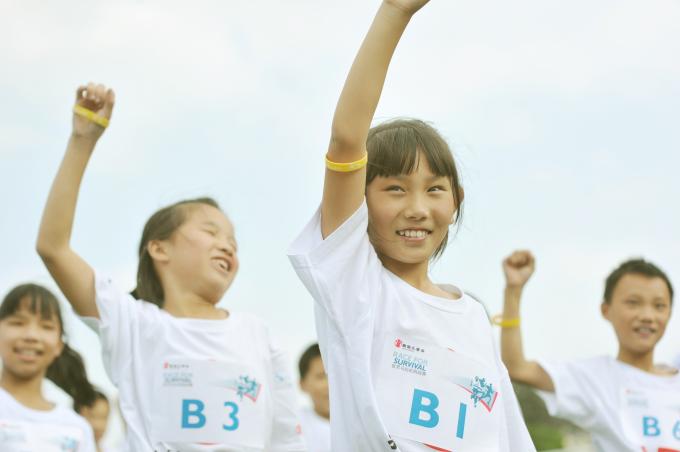Children “Race for Survival” in Save the Children’s largest child marathon

On October 23rd, 2013, more than 1,400 teachers, staff, and children across China participated in Save the Children’s annual “Race for Survival,” which underscores the role of frontline health workers in ensuring child survival. More than 50,000 children worldwide participated in the race, which took place in 67 countries.
With the support of township authorities and local health officials, students from Xinjiang and Shanghai ran the marathon to raise awareness about the critical shortage – and need – for quality healthcare providers across China. Their efforts inspired hundreds of parents, teachers, and students to join the call for increased access to quality healthcare for children around the world.
“This is a global effort led by children to highlight the continuing challenge of reducing deaths of children under the age of five, and how health workers are an essential part in solving this problem,” said Pia MacRae, Country Director for Save the Children in China. “It is impressive seeing children around China and the world coming together to call for greater investment in tackling preventable child deaths.”
According to the World Health Organization, at least 23 health workers are needed to provide adequate healthcare to each population of 10,000 people. However, the world still lacks a startling 3.5 million doctors, nurses, midwives, and community health workers, who are needed to prevent child deaths from common illnesses such as HIV/AIDS, tuberculosis, and malaria. This marked shortage of quality healthcare is especially apparent in China’s remote rural areas.
In conjunction with the 2013 Race for Survival, Save the Children released a new report entitled Lives on the Line on October 23rd, 2013, which details China’s ‘sustainable’ advancement in reducing child deaths. Yang Ruikan, Health Advisor to Save the Children in China, attributes China’s progress to the continued training and deployment of frontline health workers, who have improved the quality and availability of maternal and child healthcare across the country.
“But we also see that there is a difference in the standards of healthcare between urban and rural areas, as well as between regions,” Yang added. “Save the Children hopes to work with all levels of the government to provide training for frontline health workers in order to improve the quality and availability of maternal and child healthcare in poor, remote, mountainous and ethnic minority areas.”
 China
China